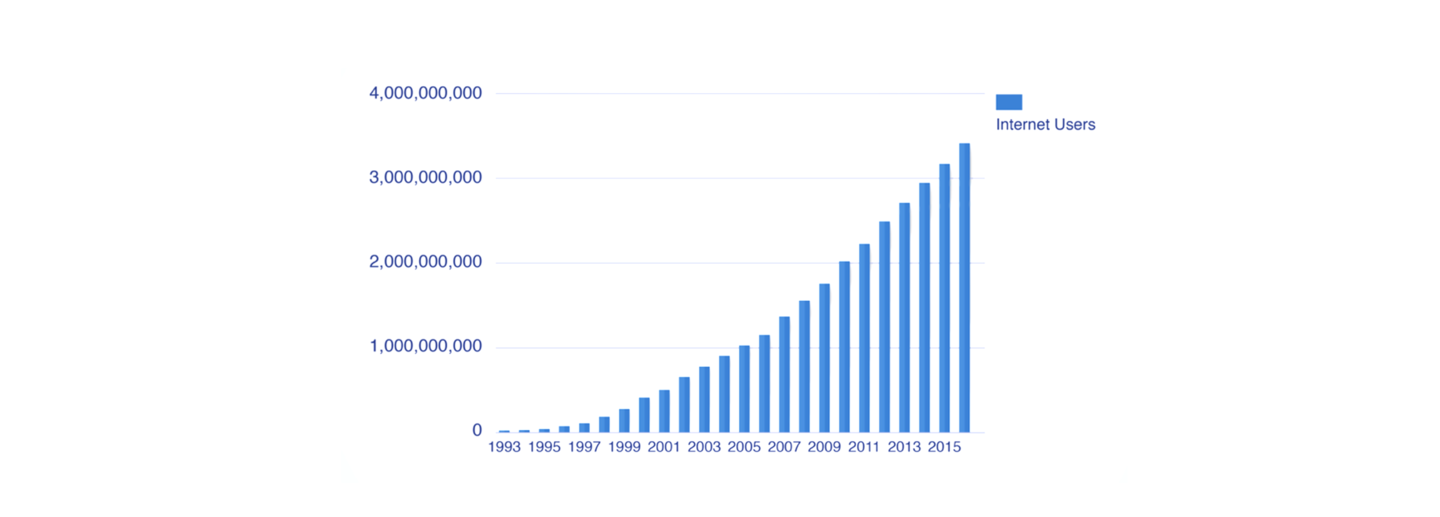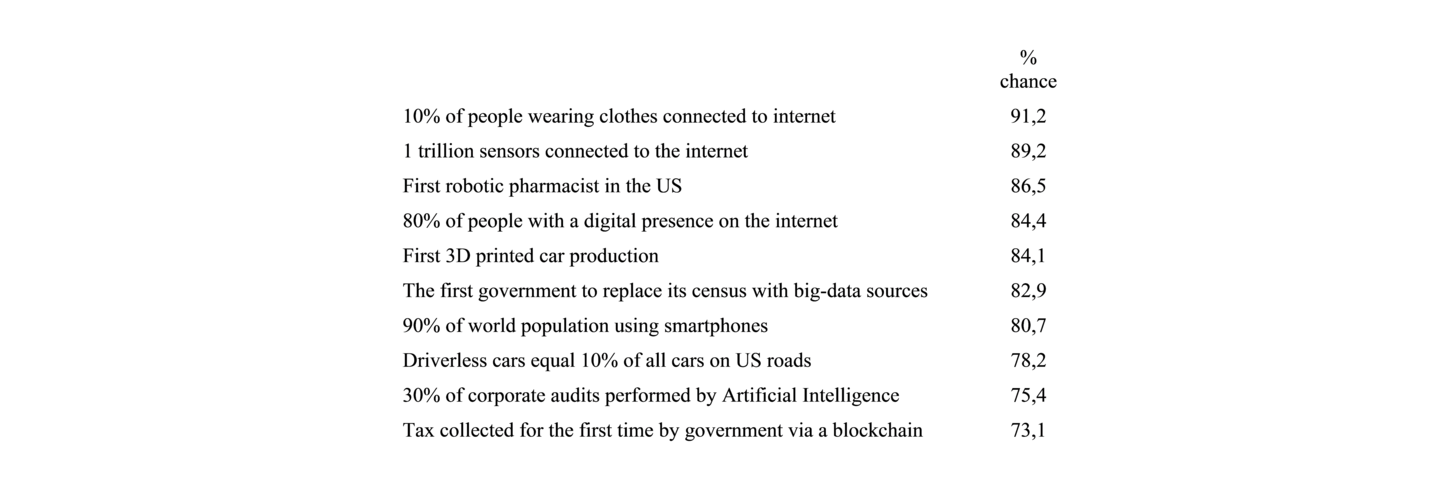A year or so ago, I worked with Diastika Rahwidiati and George Hodge of Pulse Lab Jakarta on a book chapter to reflect on the impact of data innovation on public policy in Indonesia. The lab was established in 2014 as a joint initiative via the United Nations Global Pulse and the Ministry of National Development and Planning (Bappenas). It works to close information gaps in the development and humanitarian sectors through the adoption of big data, real-time analytics and Artificial Intelligence.
The point we make in the book chapter is that in the space of just a few years, the near ubiquity of mobile phones, improvements in connectivity, and the availability of new and cheaper digital technologies are providing policy researchers and policymakers in Indonesia with access to new sources of real-time information and new tools to understand social and economic trends.
The changes in Indonesia are part of a wider global trend. According to the United Nations Global Pulse, growth in the volume of data produced globally has been exponential. In 1995 less than 1% of the world’s population used the Internet. Today that figure has risen to around 46%. The milestone of one billion internet users was reached in 2005; the second billion was reached in 2010 and the third in 2014.

Over the last ten years, the remarkable progress in digital and information technology for collecting and analyzing data has been changing the way policymakers can source and use evidence, adding real-time big data analytics to their evidence toolkits.
This data revolution is one element of a wider process of rapid technological change that goes under the name of the Fourth Industrial Revolution (4IR) which Klaus Schwab describes as ‘a confluence of technological breakthroughs, covering wide-ranging fields such as Artificial Intelligence, robotics, internet of things, autonomous vehicles, nanotechnology, biotechnology, energy storage, and quantum computing.’
The future is closer than we think
In their book, Next Humans (Prossimi Umani in the Italian edition), Francesco De Filippo and Maria Frega ask 13 Italian scientists working on genetics, robotics, astrophysics, Artificial Intelligence, etc. how life will look twenty years from now. The picture they paint is breath-taking. Advances in genetics will allow us to be healthier and live longer. New materials (e.g., graphene) will help to build the products we need for our lives and be friendlier to nature. Computing capacity will grow exponentially thanks to quantum computers. Artificial Intelligence will become ever more sophisticated and able to interpret content in the digital world. Energy will be greener. Self -driving cars will travel our streets. The expansion of big data will continue thus increasing the accuracy of predictions about people’s behaviors and events.
In his bestseller Homo Deus, Yuval Noah Harari, argues that humanity is at a brink of a new evolutionary era. The three main problems which have preoccupied humanity over the last 3000 years, starvation, epidemics, and violence, ‘have been transformed from incomprehensible and uncontrollable forces of nature into manageable challenges.’ The unprecedented development of fields such as genetic engineering, regenerative medicine, and nanotechnology provide the possibilities to tackle three new challenges: re-engineering our bodies to live longer and maybe defeat death; find the psychological and biological keys to raise global happiness; and upgrade our human capabilities through biological and cyborg engineering.
The suggestions Harari’s makes may seem to belong to science fiction, but technologies that only a few years ago seemed also science fiction will soon be part of our lives. The World Economic Forum conducted in 2015 an analysis of the probability of the wider application of some new technologies by 2025, what they call the tipping points. The results, summarized in the table below, show that some of the changes linked to the 4IR are only a few years away.

The disruption to today’s governance systems
Some of the changes mentioned above will soon be with us. Some are further away. Some may never happen. What is certain, however, is that they will disrupt the governance systems in place today. It is not a matter of whether the changes brought by the 4IR will occur, but when and how. Hence, the pressure on governments to prepare and design policies and regulatory instruments aimed at avoiding the build-up of unbridgeable gaps between countries as well as tech-savvy individuals and the rest of their societies.
The governance and policy challenges are many. I draw here from Schwab (2016) to illustrate three of them:
First: The 4IR will bring considerable changes in labor markets. People will live longer and will remain employed for longer. This will have an impact on jobs markets and national welfare systems. At the same time, automation, Artificial Intelligence, and robotics will substitute many of the tasks performed by workers today. The risk of mass unemployment and social conflict is therefore real. Governments and businesses need to collaborate to design policies that enable workers to change and adapt skillsets by learning new skills and work alongside intelligent machines. In this new future, international competition will not be based on low-cost labor but on the capability to innovate and the quality of human capital required to do so.
Second: the governments’ power will change. Big data and data analytics are helping the national and local government to respond quickly to emergencies and improve public services. Blockchain technology is opening up new opportunities to informing citizen about the way governments work and deliver public services. Better knowledge and analysis allow to identify and address locally nominated problems, thus strengthening the demands from local governments for more autonomy and decision-making power. Milica Begovic has made the point that no single actor anymore has the solution to any given problem and that there is the need to engage new thinking from the local level to address context-specific challenges. New, more decentralized, and technology-driven policy decision-making systems will have to develop whereby government organizations engage with citizen and the data and information they have. The 4IR will disrupt existing governance systems and, at the same time, strengthen the need for collaborative decision-making processes that address context-specific problems.
Third: governance systems struggle to keep pace with multiple technological changes that are occurring simultaneously. State institutions will continue to play a key role to ensure the adaptation and diffusion of new technologies, but the modality to do so will change. In terms of policy-making and innovation, processes that investigate specific or problems, design the necessary policies and regulatory frameworks, and deploy them through top-down systems will struggle in this new technology-driven context. Governance systems will have to be agile and adapt continuously to specific context and circumstances while testing innovation. Collaborations between state, civil society, and business will be key to develop an enabling environment where space exists for greater policy experimentation and the generation of learning to identify context-specific policy solutions.
Knowledge systems as the foundation of governance systems in the 4IR
Together with colleagues based in different countries in the world (Fred Carden of Using Evidence in Canada, Vanesa Weyrauch of Politics and Ideas in Argentina, Andrés Morales/Luis Carrizo of UNESCO in Uruguay, and Maria Malho of Demos Helsinki in Finland), I have begun to work on these themes. Our interest lies in the consideration that the continued economic growth (and the achievement of the Sustainable Development Goals) in middle- and low-income countries depends also on the capabilities to adapt governance systems in order to become active participants in the 4IR. To do so, countries will have to develop an enabling environment of policies and regulations that supports innovation, helps in strengthening human capital, and ensures equitable growth. We argue that solid knowledge systems, encompassing national research, higher education, data innovation, and local and professional knowledge in government and outside of government, are needed to design and experiment policies in the 21st century.
Knowledge systems matter for any governance systems, regardless to a country ranking on the income ladder. They are not static and continuously evolve, influenced by politics and the technological advances that are also changing industrial production, labor markets, and service provision.
What does this mean for individual countries? What does it mean for countries in the Western Balkans, where the main audience of this publication is?
These countries face a double challenge: reform governance systems to be ready for the 4IR and, at the same time, to become eligible for membership of the European Union. It is a massive effort to design and implement structural reforms in all sectors of society and the economy. The strengthening of knowledge systems should be a high priority. However, the research sector is side-lined compared to other reform areas in the 35 Chapters of European accession.
The point I want to make here is that to take advantage of the opportunities brought by the 4IR (and the accession to the EU in the case of the Western Balkans), it is important to design policies and development assistance programmes that recognize the knowledge system as a system. For example, moving from a focus on one part of the system such as thinktanks and knowledge production to situating them and their role in the larger knowledge context.
There is no blueprint to design these policies and programs. In the Western Balkans (as well as elsewhere) it is therefore important to research and understand how the knowledge systems have evolved over time and how knowledge informs (or does not inform) policy decisions today. This can help identify context-specific problems that local actors want to address and for which solutions can be tested and experimented.
The 4IR is imminent. We know it will change the way we live, work, and link with one another. What is less certain is how. In this article, I have suggested that investments in the knowledge systems can help to develop governance systems that prepare countries to take an active part in the 4IR. The Western Balkans countries, through their process of accession to the EU and the ongoing reforms in the knowledge systems, provide an excellent platform to engage policymakers, researchers, and practitioners to investigate this and inform policy design and development programming.
Subscribe
Helvetas Mosaic is a quarterly published by Helvetas Eastern European team for our email subscribers and website visitors. Our articles explore new trends and fresh ideas of international development work in Southeast Europe.



